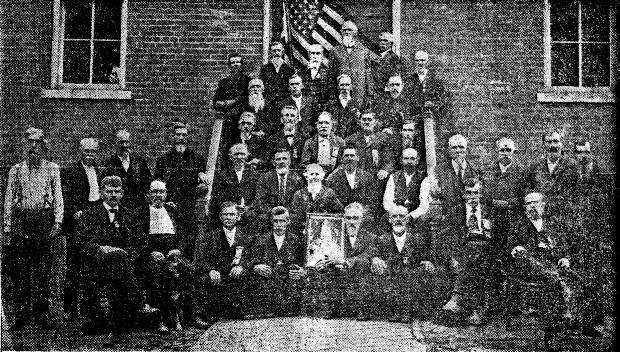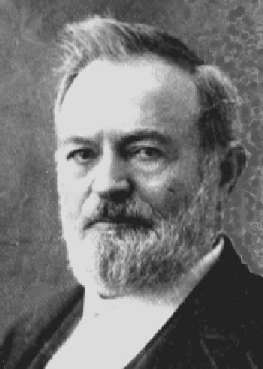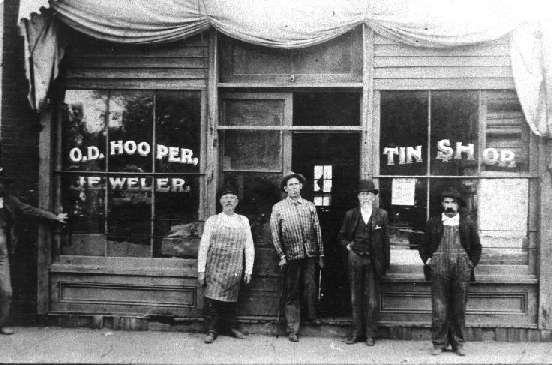Chris Hooper Photos


Cowden Grand Army of the Republic (GAR)
Samuel Akins Post 566 - about 1898
1st Row, L to R: William Valentine (seated), Marvin Dowell, B. W. Jones, A. W. Spracklen, Virgil Bowman, Charles Wakefield, David McElroy, and William Anderson.
2nd Row, L to R: George B. Carlisle (standing), Samuel Torrence, Jacob Wonus, James Perryman, Z. Moore (seated), J. T. Horseman, John L. Perkins, Wm. Taylor, John Beck, T. D. Lamson (standing), Milton Hunter, Albert Wakefield, and C. D. Horseman.
3rd Row, L to R: Dr. C. H. Carr, J. Upperman, C. R. Hooper, R. R. Jones, and C. C. Frye.
4th Row, L to R: Rev. M. Bechtel, Thomas Lockart, J. H. Akins, and C. B. Harwood.
5th Row, L to R: H. G. Conrad, Henry Robertson, J. C. Baird, L. H. Williams, Charles E. Zeigler, and Isaac Jones.
email: Chris_Hooper@dom.com




Charles R. Hooper
b. 10 Mar 1842
d. 19 Mar 1913
Buried in Mud Run Cemetery, Shelby County, IL.
Charles served in Co. C, 35th Illinois Inf, during the Civil
War, and was wounded in the battle of Missionary Ridge,
at Chattanooga, TN.
Otto Delavan "Bud" Hooper (1870-1951) owned a jewelry & tinsmith shop in Cowden around the turn of the century. This picture is thought to have been taken around 1900-1910. Bud is the one in the picture with the crippled left leg, which was stunted at a young age because of a puncture wound to his hip. The individual to the left of Bud is thought to be Zeke Burrows based on the following paragraph from Orren Jennings Hooper's autobiography. Orren (1904-1988) was Bud's son. Others in the picture are unidentified.
"Bud" was the owner of the towns tinshop and jewelry repair shop. He was an experienced tinsmith, as well as a watch and clock repairman. He had a screened-in corner of the shop for his watch and clock repairs. He also gave "Uncle" Zeke Burrows, a shoe cobbler, space in the shop for his work. Once in payment for some work he had done - a matter of only a few dollars - Bud received an old violin "fiddle" which, when supplied with a new bridge and strings, was found to have a wonderful tone. An old fiddler, Fred Stretch by name, cleaned up the instrument and, upon examination found, on the inside, that the viola (instead of a violin) was an Amati, or an imitation of that famous make. Later on tracing back the various owners of the instrument, it was found that only two of these imitation Amatis had come to this country. The trail of the instrument led back to when it had been used in an orchestra in Cincinnati, Ohio, before the Civil War. There the trail was lost. This Mr. Fred Stretch used to borrow the instrument, to play in Old Fiddlers Contests, and it was his brag that he never lost a contest when he used this particular fiddle with it's wonderful tone.
Email Contact:
claydohsf@gmail.com
Clay Hooper © 2025. All rights reserved.